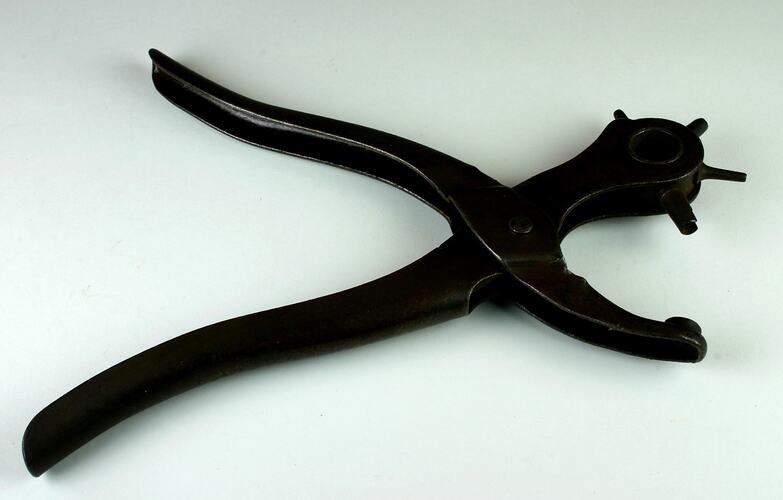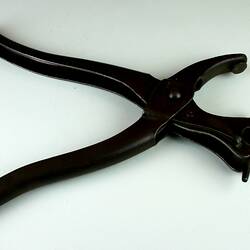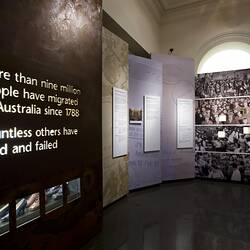Summary
This revolving plier punch (star punch) was primarily used to punch round shoelace holes. Created as a 'six bits' version, this plier exhibits only four of its six different sized bits. This unique tool was an important element within Stanio Fancoff's shoemaking kit as it enable him to tailor the shoelace hole size to the appropriate lace material sizing, providing shoes with greater aesthetic diversity.
Stanio Ivanoff Fancoff was born in 1908 in Bojentsi, a small village in Bulgaria. At age 11, Stanio left home to learn the shoemaking trade. In 1929, he immigrated to Melbourne, settled in Fitzroy and began to work for the V.G. Zemancheff & Sons basket shoe factory in South Melbourne. In1936, he married Dorotea Georgi Touzou who had recently arrived in Australia. Around this time, Stanio set up his own shoemaking business from home, with Georgi, her cousin and sister weaving the shoes which he then assembled. Select shoe samples were then taken to Sydney and Tasmania for sale. In 1942, Georgi and Stanio moved to Broken Hill for Georgi's health; there daughter Nancy was born and Stanio set up a shoe shop/factory. In 1945, Georgi died and by 1950 Stanio and Nancy had moved to Adelaide where he again opened a shoemaking business and shop. He passed away in 1978, having been in the shoemaking business for 59 years. This collection documents his migration and working life experiences.
Physical Description
This metal revolving punch plyer, (star punch) physically resembles a pair of metal pliers whereby a star sectioned turret mounts onto one of the jaws. This 'six bits' version, exhibits four existing bits and two empty spaces within the turret's underbelly where the remaining two bits previously existed. As typical of this tool type, each of the bits are different sized but on this particular tool their sizings are not indicated. Furthermore, while three bits appear round in shape the fourth carries signs of possible patterning suggesting that it may have been used to make special designs within other shoe areas. The instrument's physical structure exhibits signs of stress whereby the metal surface has been chipped or warped, and the common spring latch is missing.
Significance
This collection is significant in documenting a small migrant business as well as the fashion of a particular period. It is well provenanced and charts the application of trade skills in a new country. It also illustrates the stages of hand shoe manufacture from the 1930s, demonstrating the enduring nature of the tools and patterns that were used.
More Information
-
Collecting Areas
-
Acquisition Information
Donation from Nancy Vasileff, 21 Mar 2007
-
Past Owner or User
-
Classification
-
Category
-
Discipline
-
Type of item
-
Overall Dimensions
155 mm (Width), 20 mm (Depth), 200 mm (Height)
-
Maximum dimensions
203 mm (Length), 160 mm (Width), 24 mm (Height)
Measurement From Conservation.
-
References
R.A. Salaman, 'Dictionary of Leather-working Tools c.1700-1950 and Tools of Allied Trades,' London: George Allen and Unwin (Publishers) Ltd, 1986 [Section 2: Boot and Shoe Maker pp18-185]. John Peacock. 'Shoes, The Complete Sourcebook,' London:Thames & Hudson Ltd, 2005. NAA holds file (online) on Vasil George Zemancheff, Fancoff's employer
-
Keywords
Boot & Shoemaking, Bulgarian Communities, Bulgarian Immigration, Immigration, Small Businesses




